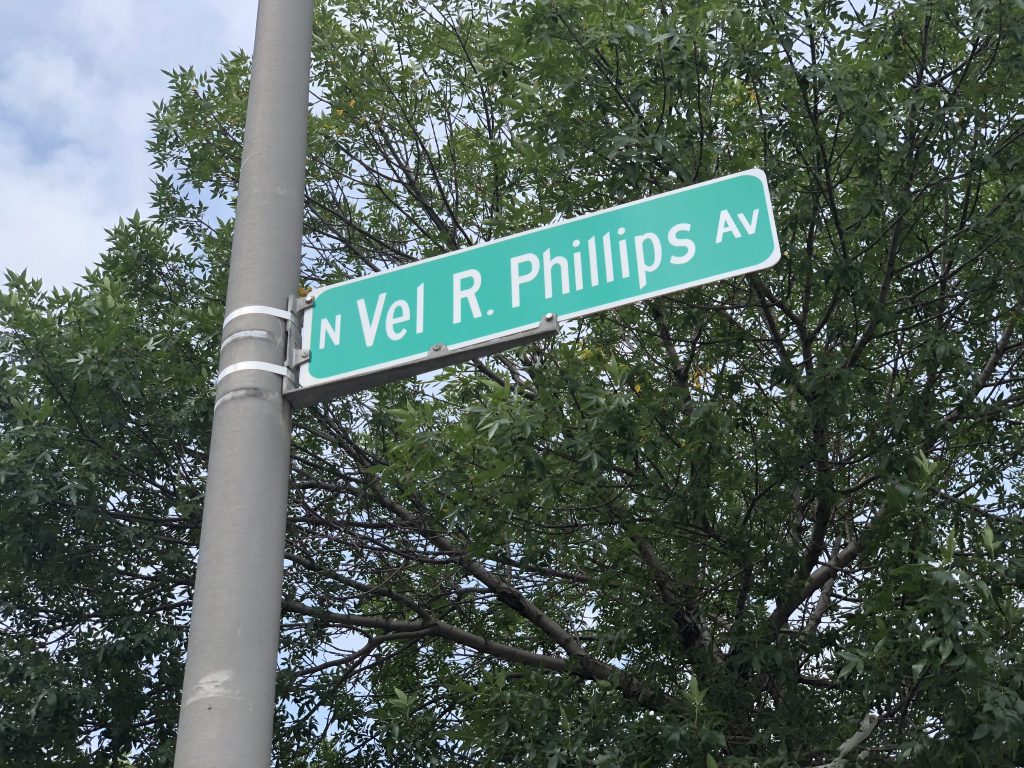City Has Few Streets Named After Women
Vast majority honor men. Here are some ways to begin changing that.
Drive around Milwaukee and you are more likely to travel on streets named after men rather than women. The tiny proportion memorializing women are likely to be names related to men in power who influenced street naming.
For example, in 1926, Arthur Wenz, a land developer in Bay View, named Carol Street after his daughter Carol. In 1927, Sidney Gettelman, a developer in the Grantosa Heights Subdivision, named Carmen Avenue for his wife, Carmen Gettelman. In 1969, Michele Miller and Beatrice Prause, who were the granddaughter and wife of Alderman Clarence Miller, were commemorated with Michele Street and Beatrice Street, respectively. And the list continues.
Before Milwaukee’s incorporation in 1846, there were three villages – Juneautown, founded by Solomon Juneau in 1818, as well as Kilbourntown and Walker’s Point, both founded in 1834 by Solomon Juneau and George Walker, respectively. Despite their proximity, Kilbourn attempted to isolate Juneautown by independently laying and naming Kilbourntown’s streets. This caused a rivalry between Kilbourn and Juneau, and on May 3, 1845, it escalated into an episode known as the Bridge War.
After incorporation of the three villages, Milwaukee inherited a haphazard street naming structure. Moving forward, Milwaukee’s early real estate developers assigned names to the streets, which heavily favored male names. In 1929, however, the city officially adopted a more coherent naming approach. Although this naming system was to be implemented by the city engineer’s office, real estate developers still influenced the naming, which exacerbated the gender issue.
In 1990, Milwaukee developed a democratic commemorative process. Among other requirements, the system required a petitioner for a street rename to obtain signatures of the property owners along the street, and at least 50% must agree to the name change. This made it almost impracticable to commemorate women, or anyone else for that matter.
In 2021, an ordinance nullified the signature condition for official street renaming, replacing it with a four-fifths vote of Milwaukee’s Common Council members (12 out of 15 votes, currently). Although this rule is commendable, it by no means solves our gender problem.
I believe democracy, equity and diversity should guide Milwaukee’s street commemoration framework. Women should have a much more significant presence in our street names. We could start moving toward equity by redefining “heroism” to recognize the values and cultural contributions of women. Heroism should only not be associated with men’s narratives but should be socio-culturally inclusive.
Further, we need to increase public awareness about inequitable commemorative practices regarding Milwaukee’s streets. Perhaps local feminist organizations could exercise their rights to bring gender parity to street commemoration. This recommendation was supported by Alderwoman Milele Coggs in an interview for my master’s thesis. In 1994, while a student at Riverside University High School, Coggs played a leading role in renaming East Reservoir Avenue to Glover Street — Joshua Glover was a man who escaped slavery whose story includes a dramatic chapter in Milwaukee. Recalling that experience, Coggs mused: “We could change [a street name]? That’s what we can actually do? . . . We started the process, but most people never do that. The more women know, the better.”
If Milwaukee decides to reconsider its street names, the intersection of race and gender also needs to be considered. Women of color should be significantly represented in the redistribution.
Indeed, street commemoration is an intersection of the politics of space and a place of politics that excludes women. If we value gender equity, democracy and diversity, it is important that we consider women’s values and identity in our street names.
Ayodeji Obayomi is a PhD student in University of Wisconsin-Milwaukee’s urban studies program. He is interested in the historical geography of memory and how it perpetuates inequity in Milwaukee.
OPINION: Women are missing from Milwaukee’s street names. Here’s how to fix that. was originally published by the Milwaukee Neighborhood News Service.
Op-Ed
-
Wisconsin Candidates Decry Money in Politics, Plan to Raise Tons of It
 Dec 15th, 2025 by Ruth Conniff
Dec 15th, 2025 by Ruth Conniff
-
Trump Left Contraceptives to Rot; Women Pay the Price
 Dec 8th, 2025 by Dr. Shefaali Sharma
Dec 8th, 2025 by Dr. Shefaali Sharma
-
Why the Common Council’s Amended Budget is Good Policy for Milwaukee
 Nov 20th, 2025 by Alds. Marina Dimitrijevic and Russell W. Stamper, II
Nov 20th, 2025 by Alds. Marina Dimitrijevic and Russell W. Stamper, II























All the information in the second paragraph came from the book “Milwaukee Streets: The Stories Behind their Names.” Shouldn’t it have been credited?
I think this is a great idea and think one of the easiest ways to start would be with major avenues that aren’t already named for a person or other historical purpose, like:
Capitol
Locust
Center
North
Walnut
Oakland
Prospect
National
Mineral
Greenfield
Oklahoma
Forest Home
(There may be something I’m missing with a couple of these. I wouldn’t be for changing something like Watertown Plank Road, which is, indeed, historic.)
From there, MKE could consider streets named after people with little or no historical purpose (the developer’s daughter) or after people whose impact over decades has truly been eclipsed by others more worthy of the honor, in retrospect.
Personally, I’m one for keeping number streets, number streets. That said, it’s exciting in a woefully overdue sense to see MLK Jr. Drive and Vel Phillips Avenue. Ultimately, both seem “honorary,” in a way. The problem with the latter is that, even though it extends fully to the north, it’s really not an avenue; it quickly becomes a residential street. Weird. The problem with both is that these names do not extend to the South Side, where I grew up. A sad commentary on MKE’s segregation and racism and on the work that remains unfinished…